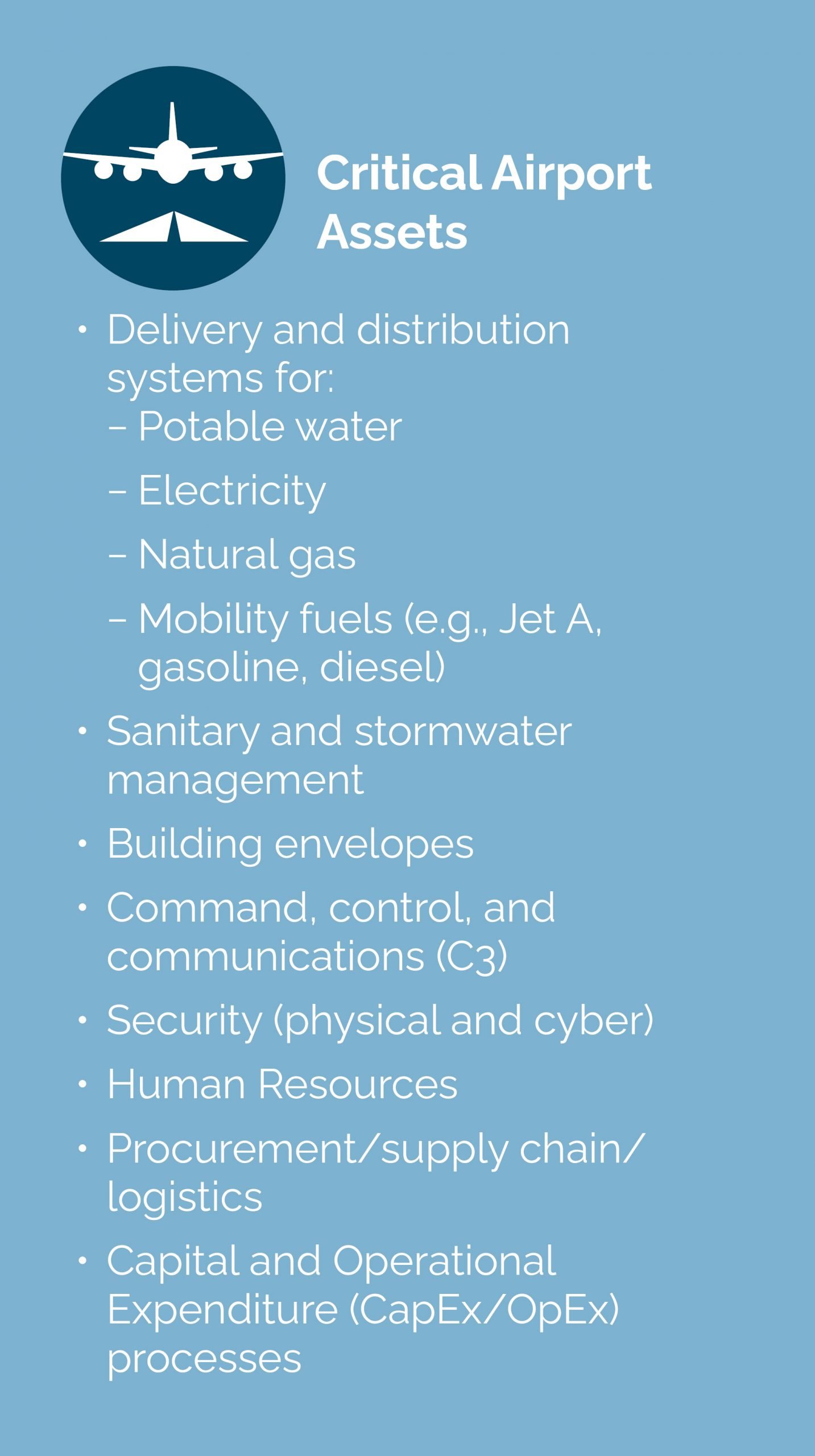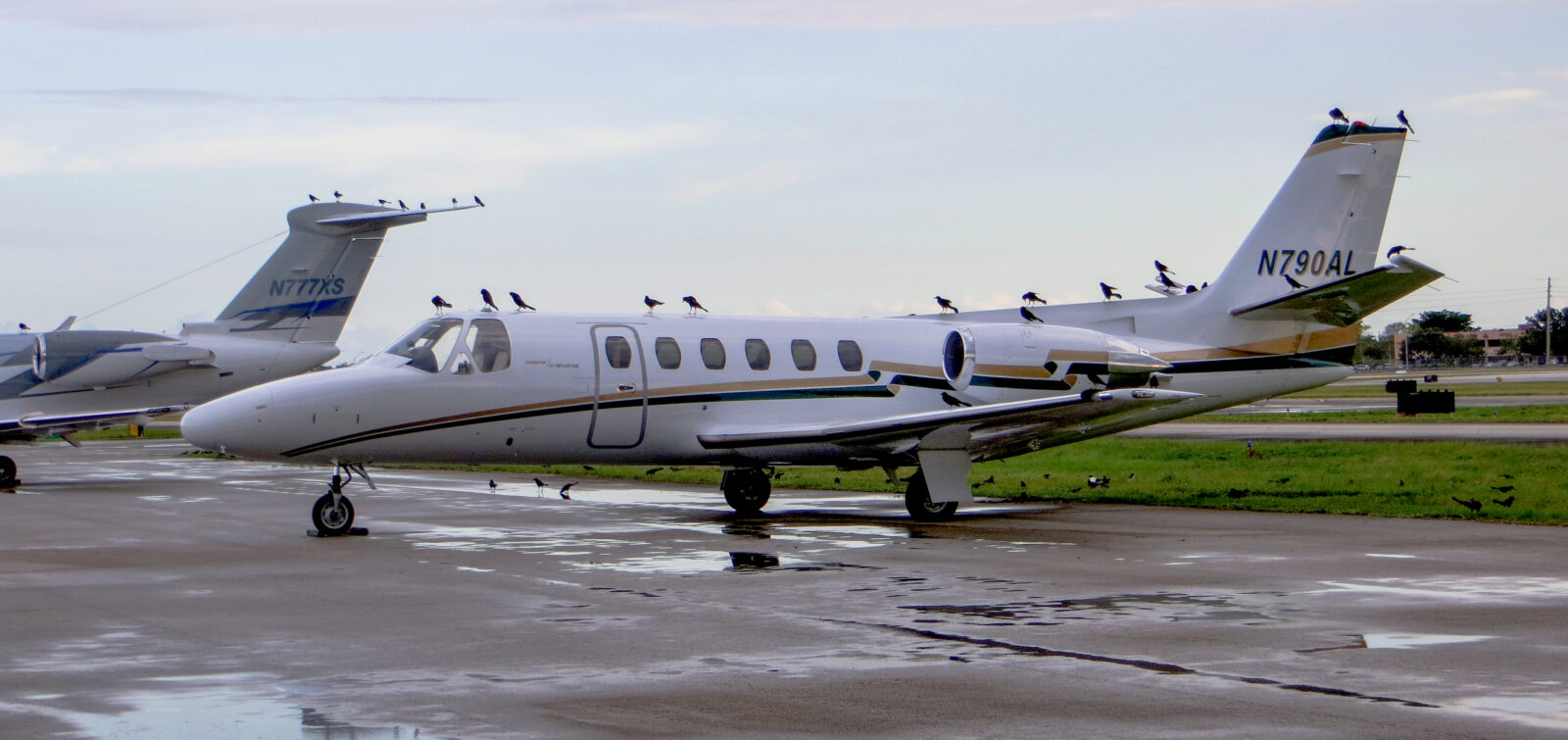The Federal Aviation Administration’s (FAA’s) focus on Irregular Operations (IROPS) and Continuity of Operations Planning (COOP) has shown that one of the key challenges in responding to a shock event is ensuring clear and effective communications across the complex inter-dependent (yet sometimes siloed) systems that comprise the NAS.
Both IROPS and COOP are currently focused on responding to a shock event after it happens. While this is an important part of resilience, a more crucial consideration is the development and implementation of comprehensive and coordinated plans that minimize or prevent chronic and shock event-related risks. In addition to managing the day-to-day risks associated with faulty or aging equipment and systems, airport operators must also demonstrate leadership during shock events, by providing clear, consistent, and efficient communications and supporting response efforts.
Resilience Management Plan
A resilience management plan (RMP) is an enhanced COOP plan that provides a systematic, proactive management approach to enhancing an organization’s ability to respond to shock events and address chronic stressors that ensures the integrity of critical physical and human systems, which connect infrastructure and operations.
A resilience management plan (RMP) is an enhanced COOP plan that provides a systematic, proactive management approach to enhancing an organization’s ability to respond to shock events and address chronic stressors to ensure the integrity of critical physical and human systems, that connect infrastructure and operations. Importantly, a robust RMP enables an airport to apply smart management and decision-making principles, which are based on the long life-cycle of airport assets and infrastructure, and ensure that those efforts are properly aligned with efforts of the FAA, tenant airlines, communities surrounding the airport, and other key stakeholders.
Addressing resilience requires more than just a static plan; it involves a dynamic planning process achieved through thoughtful, organization-wide decision-making, which eventually becomes engrained in the organization’s culture. Just as the FAA has identified a Safety Culture as being a key part of a Safety Management System (SMS), embracing a resilience risk-based approach should become an integral part of an airport’s culture and decision-making process. Many management systems, including the SMS, are based on four pillars, and an RMP should adopt a similar approach that includes:
- Resilience Policy and Objectives
- Risk Management Processes
- Resilience Assurance System
- Resilience Promotion Program
It is important to note that an RMP should complement existing management systems and facilitate the communication between other similar systems so that all risks can be fully understood. In an airport setting, it is difficult for one individual or even one department to effectively identify and understand the consequences of all resilience-based risks. Instead, accountability for resilience-based decision-making should be distributed among leaders throughout the organization.
Planning Boundaries
 As previously discussed, the classical perspective on maintaining continuity of operations generally focuses on critical operating infrastructure; however, the resilience paradigm is shifting fast. Utilities and security can no longer claim sole title to critical operating infrastructure. The people involved in operating and maintaining airport infrastructure and the communities that support the airport are also considered critical to the continuity of operations. As such, a comprehensive resilience plan should touch on all lines of airport business, but a risk-based approach to developing an RMP can help airports identify and prioritize key assets, systems, and infrastructure. It is important to note that critical assets are not just physical things (like runways and terminals), but also people (like airport and tenant employees), and processes (like capital planning and facility/asset management plans).
As previously discussed, the classical perspective on maintaining continuity of operations generally focuses on critical operating infrastructure; however, the resilience paradigm is shifting fast. Utilities and security can no longer claim sole title to critical operating infrastructure. The people involved in operating and maintaining airport infrastructure and the communities that support the airport are also considered critical to the continuity of operations. As such, a comprehensive resilience plan should touch on all lines of airport business, but a risk-based approach to developing an RMP can help airports identify and prioritize key assets, systems, and infrastructure. It is important to note that critical assets are not just physical things (like runways and terminals), but also people (like airport and tenant employees), and processes (like capital planning and facility/asset management plans).
This three-part blog series kicked off with the definition of airport resilience. In our next topic, you can read an approach to creating an RMP. If you would like to read the full series in its entirety, click here to download a PDF. Please reach out to our airports resilience specialist, Neal Wolfe, with any questions or comments.








